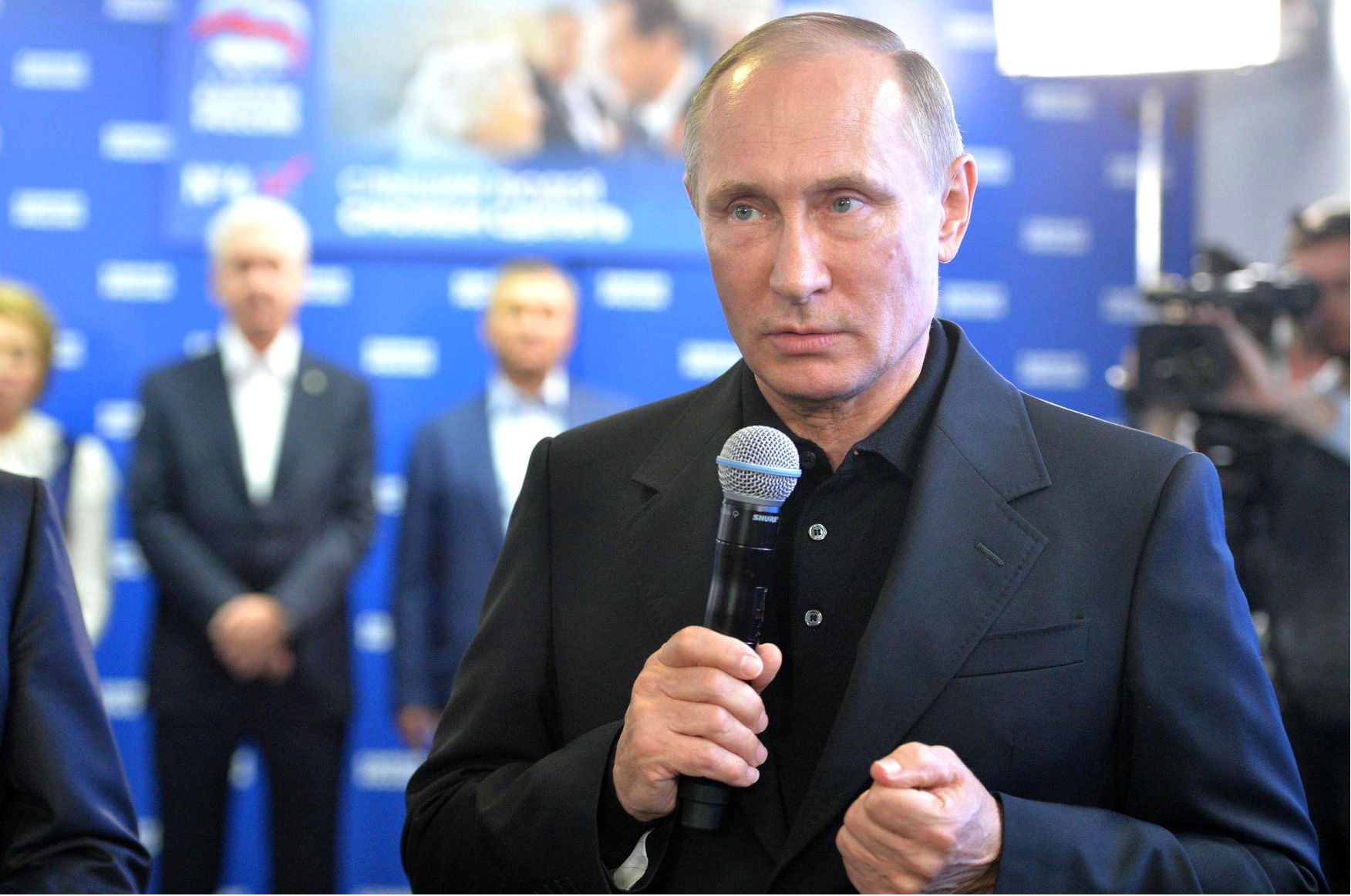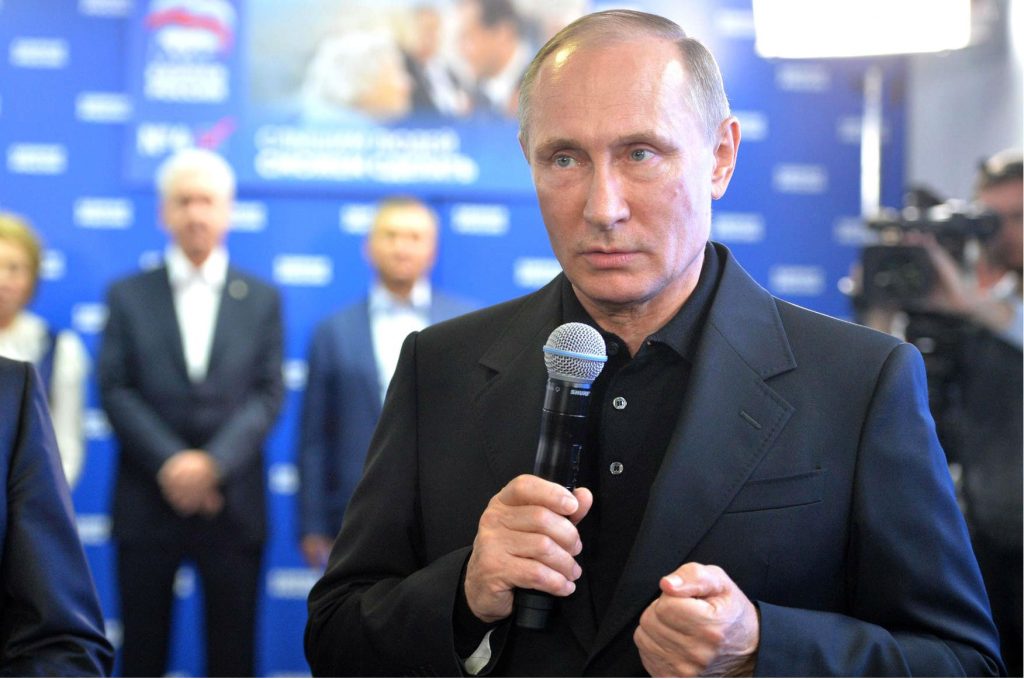 “Russia is back.” These were the recent words of General Curtis Scaparrotti, NATO’s Supreme Allied Commander Europe—and he was correct. Thanks to a rapidly growing arms budget and a worrisome frequency of snap military drills near NATO’s borders, Russia is indeed back to the game of power politics after a twenty-five year hiatus. The implications of this are clear: the threat that Russia poses is not going to fade away and policy planners will have to live with it—or better yet, understand the logic of this newly assertive great power.
“Russia is back.” These were the recent words of General Curtis Scaparrotti, NATO’s Supreme Allied Commander Europe—and he was correct. Thanks to a rapidly growing arms budget and a worrisome frequency of snap military drills near NATO’s borders, Russia is indeed back to the game of power politics after a twenty-five year hiatus. The implications of this are clear: the threat that Russia poses is not going to fade away and policy planners will have to live with it—or better yet, understand the logic of this newly assertive great power.
Following the annexation of Crimea and the onset of war in the Donbas in April 2014, there has rightly been an avalanche of books analyzing Russia’s foreign policy in what the latter calls its “near abroad.” However, despite their merits, none of these books pays sufficient attention to Russia’s dealings with its so-called compatriots: ethnic Russians, Russian speakers, and those who culturally align themselves with Russia. This is where Agnia Grigas’ new book, Beyond Crimea: The New Russian Empire (Yale University Press, 2016), stands out. It provides much needed insight into the ways the Kremlin uses these thirty-five million compatriots, scattered across the post-Soviet region, for its own geopolitical purposes.
The central argument Grigas makes is that over the last decades, Moscow has been actively pursuing what the author calls the “reimperialization policy trajectory.” In short, Russia initially employs a seemingly harmless combination of soft power instruments, including cultural, economic, and linguistic tools, to shape its Russian compatriots’ perceptions. Simultaneously or subsequently, the Kremlin utilizes various policies designed to support the rights of these Russian speakers. While this may seem innocuous enough, things quickly follow a different path. In particular, these policies are usually accompanied by an intensifying propaganda campaign, which creates the appearance of an “urgent” need to protect these Russian individuals. The final step in the “reimperialization policy trajectory” is either the complete annexation of a territory, as it was in Crimea, or the creation of breakaway statelets that, despite their superficial independence, act as de facto Russian protectorates.
In order to prove this bold claim, Grigas conducts a sweeping overview of Russia’s foreign policy toward thirteen countries, all while masterfully highlighting their regional nuances. In one chapter, the author looks at Moscow’s aggressive meddling in the affairs of Moldova, Ukraine, and Georgia, which led to the creation of frozen conflicts in Transnistria, the Donbas, and the Caucasus. In another, Grigas discusses the three Baltic States and highlights how Russia-bordering regions like Estonia’s Ida-Viru County, where Russian speakers number 80 percent of the population, and Latvia’s Latgale, where Russians make up nearly 39 percent of the population, face the greatest risks for destabilization.
Likewise, the author examines the five Central Asian republics and notes how Russia’s attempts to exercise its instruments of power have led to vastly different results in each of these countries. While Russia’s policies have largely failed in Kazakhstan, Turkmenistan and Uzbekistan, they have been very effective in the generally poor and weak countries of Tajikistan and Kyrgyzstan. Last, Grigas discusses Armenia and Belarus and demonstrates how Russia’s foreign policy played a dominant role in shaping the domestic politics of its two closest allies.
In addition to providing a detailed analysis of the military, economic, and cultural instruments that the Kremlin employs to exert its influence, Grigas’ book goes the extra mile by including the views of individuals who could be labelled Russian compatriots. The reader is presented with a unique opportunity to hear from notably divergent voices ranging from the greatest supporters to the fiercest critics of Putin and his policies.
In the end, Grigas concludes that there is indeed a thread of historical continuity between the expansionist policies of Putin’s era and those of his predecessors like Catherine the Great. This in turn suggests that the Kremlin may be poised to recreate the former Russian empire—if not through outright annexation, then through the establishment of a strong Russian sphere of influence.
Grigas’ new book is a welcome addition to the current literature on Russian foreign policy, and it will doubtless prove to be of tremendous use—not only for decision-makers, but for anyone who is interested in understanding the driving force behind Putin’s strategy in the post-Soviet region.
Lukas Trakimavičius is an energy and security analyst in London with a focus on European affairs.
Image: Russian President Vladimir Putin visits United Russia's headquarters on September 18 in Moscow. Credit: Kremlin.ru
